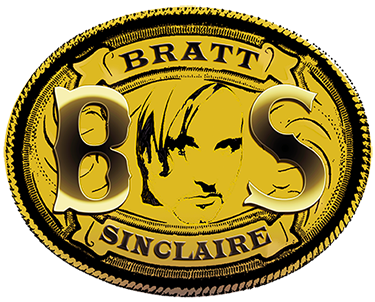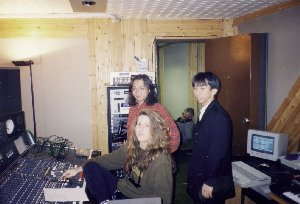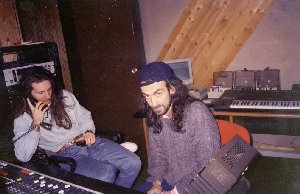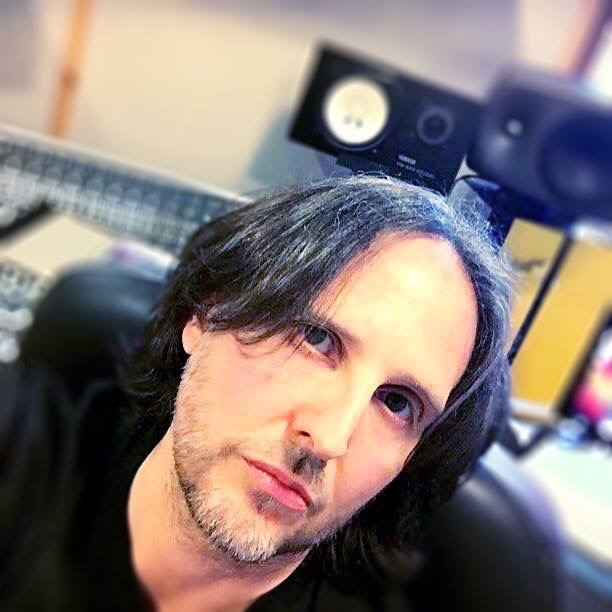My biography
Bratt Sinclaire – his real name is Andrea Leonardi – was born april 1967 in Milan, Italy.
Bratt’s parents were both high school math teachers (… poor fellow!) so that he grew up in a pretty high culture environment but since the early years of his life Sinclaire felt that college was not the best path for him. During school period (late 70’s) Bratt fell under the music spell becoming a big Elvis Presley’s fan and in 1980 he was letterally kidnapped by AC/DC’s 6 strings call.
In the next 3 years Bratt started studying music theory, spent a lot of time on his guitar and took all those typical steps that teenagers usually take when they are cought in the music trap¦like: putting together a band in order to perform at the annual school summer party, or saving money to buy a brand new Gibson SG (Angus Young style) and so on. Very soon school was replaced by music as the main activity so that in1984 Bratt left high school to join a 3 years long jazz/guitar course.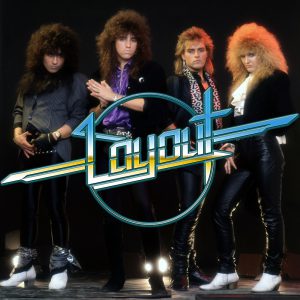 In 1984 Sinclaire met another big AC-DC’s fan from the block: Alberto Contini (Rodgers and Contini label) and in May of the same year he joined an heavy metal band called Layout. (The first singer of that band is now days known as Niko in Japan. What a small world!!
In 1984 Sinclaire met another big AC-DC’s fan from the block: Alberto Contini (Rodgers and Contini label) and in May of the same year he joined an heavy metal band called Layout. (The first singer of that band is now days known as Niko in Japan. What a small world!!
1985/1986/1987 were years when Sinclaire splitted his musical action in two: on one side there was Layout’s activity and on the other Bratt started his very first recordings by producing demo-tapes for some local rock bands and working as main sound engineer in many live shows including some of the performances of Alberto Contini’s band named Bulldozer. This kind of work differentiation took some significant results very soon. In 1987 Joe Vescovi (formerly keyboards player for the italian band “Trip” in the 60’s and for Ritchie Blackmoore’s “Rainbow“ in the 70’s), decided to join Layout as a manager and brought the band on tour in Canada in April/May/June of1988. In 1989 Sinclaire was asked by Contini to produce the new Bulldozer‘s live album. In 1990 Layout suddenly broke up and Sinclaire had the chance to be much more focused on producing other Rock and Heavy metal albums for a small independent label called Metal Master. Sinclaire’s dance music carreer started in 1991 when Alberto Contini came up again with the nice offer for Bratt to join his brand new records label’s team
That label, named “A-Beat-C”, signed a big deal with the Japanese Avex Trax (fully dance music oriented at that time) and Contini just wanted to make sure that his team was strong enough for such a challenge into the second record market of the world.Sinclaire joined A-Beat-C’s pool and moved from his home town to Mantova where the label was based. As per Avex’s request an artist-name was choosen so that Andrea Leonardi became “Bratt Sinclaire” – This artist-name sounds very similar to a character-name (“Bret Sinclair”) played by “Roger Moore” in the popular 70’s british Tv serial called “The Persuaders“, which still is one of Bratt’s favorites TV series – The 4 years spent in Mantova along with Contini and Dave Rodgers (formerly 80’s High energy singer and co-owner of “A-beat-C”) were amazing.
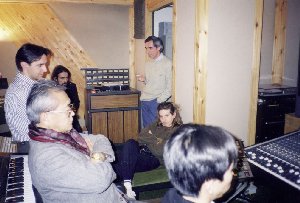
The “A-Beat-C” team (Alberto Contini, Dave Rodgers, Bratt Sinclaire, Gino Caria, Sandro Oliva, Luigi Raimondi, Giordano Foglia, Fabrizio Rizzolo) started working very hard on Eurobeat field – along with Avex Trax’s A&Rs – in order to make this gender very popular with the young people in Japan.
Many tunes were released by “ABeatC” and published by Avex on it’s flagship compilation named S.E.B. SuperEurobeat On this compilation that was released monthly, also appeared tunes by “Time records” (other than A-Beat-C’s ones) all mixed by another Eurobeat producer: Laurent Newfield.
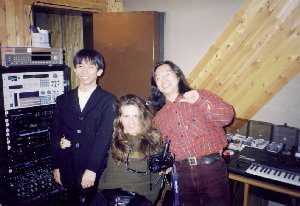
Totally adrenalized by having the chance to run the label’s “B studio” on his own, Bratt plunged into the composition and producion of Eurobeat and Techno tracks so that in 1991 (the same year that he joined the label) Bratt composed and produced, together with Contini, the song “King and Queen” by King&Queen which still is one of the Eurobeat biggest hits ever. Sinclaire’s Eurobeat style was very original and unusual since the beginning (if compared to classic Hi-Energy/Eurobeat from the previous decade) and this was probabily due to his strong Rock background. That also was a key for Bratt to open many hidden doors in the hearts of Eurobeat listeners. Sinclaire’s way to compose tunes was evidently american “FM”, “AOR” oriented and his mixdown style was very aggressive in sound and balance where the lead voice just floats on the music. It doesn’t step on it.
The whole A-Beat-C’s team worked very very well and highly professional as expected but Contini’s intuition of having Bratt in the team appeared as decisive. In fact,from 1991 to 1995, Sinclaire composed, mixed and produced more than 200 tracks and most of’em represented a brand new Eurobeat and Techno trend in Japan (see this highlited in “Eurobeat” and “Techno” sections) some of them certainly changed A-Beat-c’s and Eurobeat’s history forever. (see this highlited in “hottest trax” section)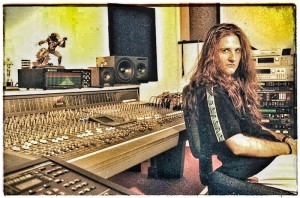
Thanks to great Contini’s business capabilities and Avex’s full trust in such a talented pool, A-Beat-C had the chance to enter the legendary Japanese pop-market by the rear door so that a few of the best label’s tunes were chosen to be covered by the most famous pop artist in Japan. Bratt had many tunes coverd and some of them ranked very high in Japanese Top 10 Pop-chart. ( see this highlighted in “Covered in Japan“)
 In the late 1994 tiredness and pressure for such a 5 year long effort made the label’s environment quite uncomfortable for Bratt. So he signed a deal as a free-lance producer with A-Beat-C itself and moved from Mantova back to Milan where the first “Sinclaire studio” was built. Being phisycally away from Mantova got Bratt considering the possibility to take a step back from the music-biz ‘s hi -level policy for diving into a different experience only made of pure talent-power and healty ambitions. Another “side effects” of being back to Milan was meeting Clara Moroni and Laurent Newfield from Time Records.
In the late 1994 tiredness and pressure for such a 5 year long effort made the label’s environment quite uncomfortable for Bratt. So he signed a deal as a free-lance producer with A-Beat-C itself and moved from Mantova back to Milan where the first “Sinclaire studio” was built. Being phisycally away from Mantova got Bratt considering the possibility to take a step back from the music-biz ‘s hi -level policy for diving into a different experience only made of pure talent-power and healty ambitions. Another “side effects” of being back to Milan was meeting Clara Moroni and Laurent Newfield from Time Records.
Clara and Laurent told Sinclaire about their intention to quit with Time Records and suddenly everything was clear.
In the second half of 1995, in agreement with Contini, Bratt left A-beat-C and 50 days later Delta Label was born and signed a huge deal with Avex.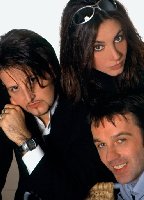
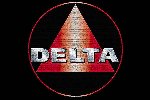 Delta’s team (Bratt Sinclaire, Laurent new field and Clara Moroni) were considered the Eurobeat Dream-team by listeners even before the first track was out. In order to give Delta productions a better image, the 2 producers decided to sign each and every label’s Eurobeat production as “Produced by Newfield & Sinclaire” even though they both have actually always been working on their own tracks in 2 different italian cities during the whole period of Delta’s life. So, Avex started releasing one S.E.B. “Request countdown” compilation per year, where the included tunes were voted by listeners during previous 11 months.
Delta’s team (Bratt Sinclaire, Laurent new field and Clara Moroni) were considered the Eurobeat Dream-team by listeners even before the first track was out. In order to give Delta productions a better image, the 2 producers decided to sign each and every label’s Eurobeat production as “Produced by Newfield & Sinclaire” even though they both have actually always been working on their own tracks in 2 different italian cities during the whole period of Delta’s life. So, Avex started releasing one S.E.B. “Request countdown” compilation per year, where the included tunes were voted by listeners during previous 11 months.
If A-Beat-C’s times were amazing, Delta’s were fantastic. That new pool showed up all its power and the new label became soon the most appreciated by fans so that every year, in all “S.E.B” “Request countdown” compilations, Delta had never less than 5 tracks in related top10s and especially Sinclaire”s tunes reached N.1 from 1996 to 1999 and from 2001 to 2002.
“Mr. Night of fire”
One of those songs, called “Night of fire” by Niko, best ranked in 4 S.E.B.s “Request countdown” out of 8 and, in the year 2000, it brought at Delta’s office 3 among the most prestigious Japanese music awards:
“Gold Album of the year”
“Animated album of the year”
“Special product of the year”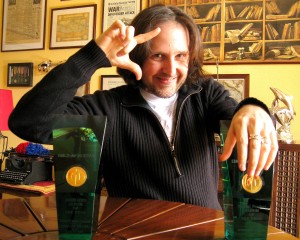
Later on, in 2018, Universal Music Japan’s international compilation named “Best 1 hits” included “Night of fire” by Niko beside super-monsters artists from all over the globe. Thanks to this iconic track Eurobeat music stands among the stars of the world. 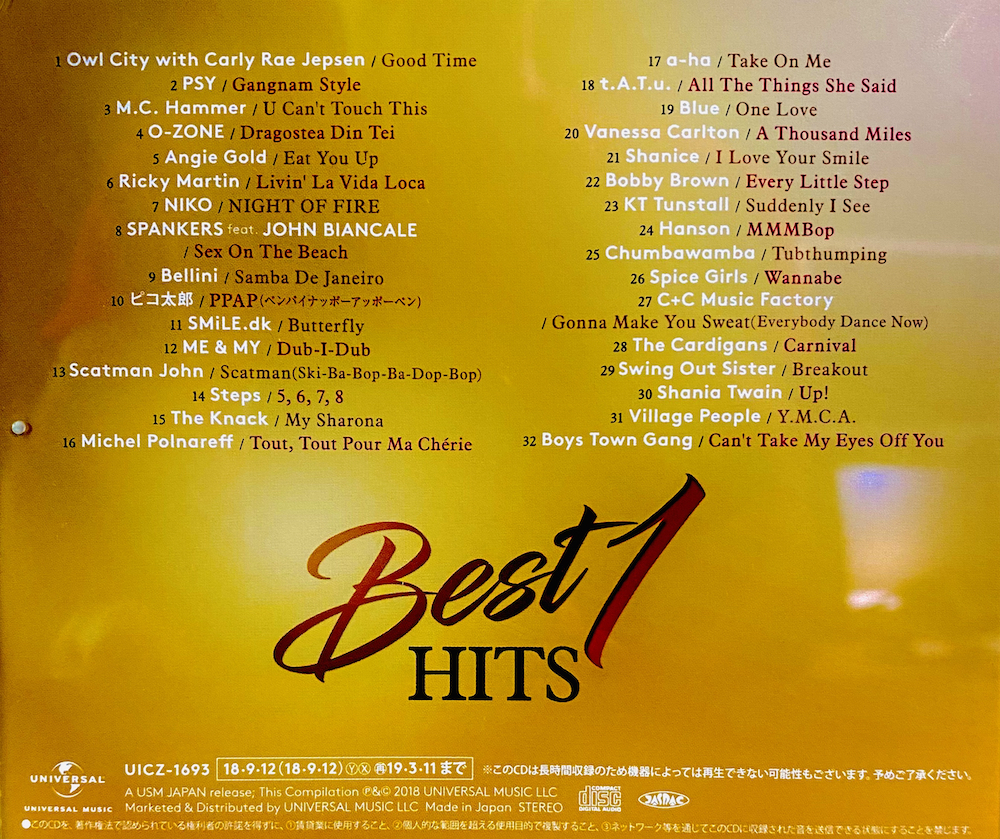
Anyways, in 2006, Delta seemed to be seriously interested in trying new partnerships with the Japanese dance-market other than Avex’s so Bratt Sinclaire decided to move out and left the company.
In 2007 a brand new Eurobeat and Techno company named SinclaireStyle was born.
All master recording and publishing rights of all tracks composed and produced by Sinclaire at Delta were transferred to SINCLAIRESTYLE so that, in 2008, Bratt was ready to re-start with his career in Eurobeat and Techno.
In 2010 Bratt signed another great Eurobeat success called “1.2.3.4. FIRE!” (by main SinclaireStyle’s artist: Dejo) which was elected as “The king of Eurobeat 2010″. (check out 1.2.3.4.Fire! The video and 1.2.3.4.Fire! The making of)
In 2011 SinclaireStyle started distributing on its own digital releases of Eurobeat and HyperTechno tracks worldwide (except for Asian area) so that many brand-new ParaPara and Tech Para fans from both north and south America showed up . Thanks to very high quality level of Sinclaire’s song-writing combined with his legendary “commercial” sound, many and many other dance-addicted fans from all over the world suddenly got in touch with both Eurobeat and HyperTechno by becoming brand-new fans and rising Bratt to the most followed and loved even outside Japan.

In 2011 Sinclaire, as well as Andrea Leonardi, was noticed and interviewed by italian Sky TV as the most covered italian musicians in Japan of all times (21 different tracks covered, so far…).
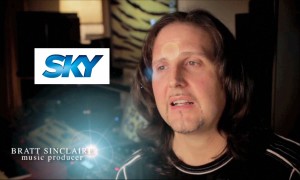
Bratt Sinclaire has the natural attitude to roughly forget the latest success and restart looking for next, every time with in his mind only one target: taking his music as high as never before
